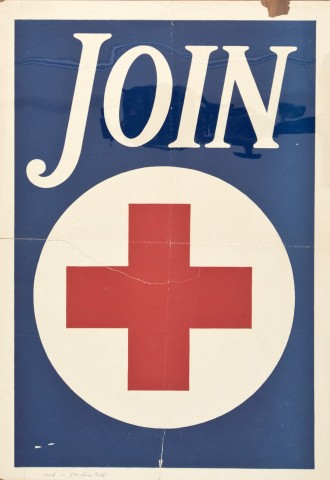Selling War and Buying Patriotism: Propaganda, Posters, and Prose from WWI and WWII
to
Reception:
-
to
Take a historical journey to explore the history of World Wars I and II through the lens of the artists who translated war posters into community-influencing propaganda. For centuries, emotionally charged imagery has been used to demonize the enemy, inspire patriotism, boost volunteerism, and urge austerity. As such, the posters disclose four common themes of persuasion: the hostile enemy in contrast to the brave protector, community sacrifice, and sideline “saviors” to unite our communities during times of war.
Posters depicting the enemy as barbaric monsters sought to dehumanize adversaries. Dark and threatening-themed posters capitalized on fears and the need for protection to rally the public to support. Bright, inspiring civic call-to-action posters showing food rationing and reduced spending encouraged folks on the home front to make sacrifices to support the war overseas. Savior-oriented posters depicting maternal figures, such as angels and nurses, rescuing soldiers from the horrors of war were instrumental in recruiting women to join the American Red Cross and the Nurse Corps.
Analyzing these themes aims to help audiences understand how wartime propaganda shaped public sentiment during World War I and World War II. This examination questions the use of emotion as a psychological tool in villainizing the enemy, celebrating the protector, promoting sacrifices, and empowering the savior. The exhibit seeks to ask (and answer) the question: is the use of persuasive art an effective and ethical tool in advancing wartime strategy?
James Falotico Senior Thesis:
James Falotico (he/his) is a fourth-year student from Red Bank, New Jersey, pursuing a Museum Studies Major and a History Minor. He began studying military history when he inherited his father’s collection of World War I and II propaganda posters. He has been researching and working this collection for the past 12 years. Using the experience gained while studying at RIT, James hopes to contribute to the preservation of these posters and their collective histories.
This exhibition is enriched by materials from the Billie Wiren Collection, lent by Geoff Spencer and Kathy Hodges. These letters, photos, medals, documents, and related materials on view in the gallery bring the perspective of an American Red Cross service member and remind us of the lived experiences of those serving and supporting the efforts of the United States during WWII in particular.
Acknowledgements:
Items are on loan from the Billie Wiren Collection; courtesy of Geoff Spencer and Kathy Hodges. This exhibition is made possible with the support of Dr. Jim Hall, Dean of University Studies and Executive Director from the School of Individualized Study; Chad Van Gorder, Director of RIT Veteran Student Success Center; and the Museum Studies Program in the College of Liberal Arts at Rochester Institute of Technology.







